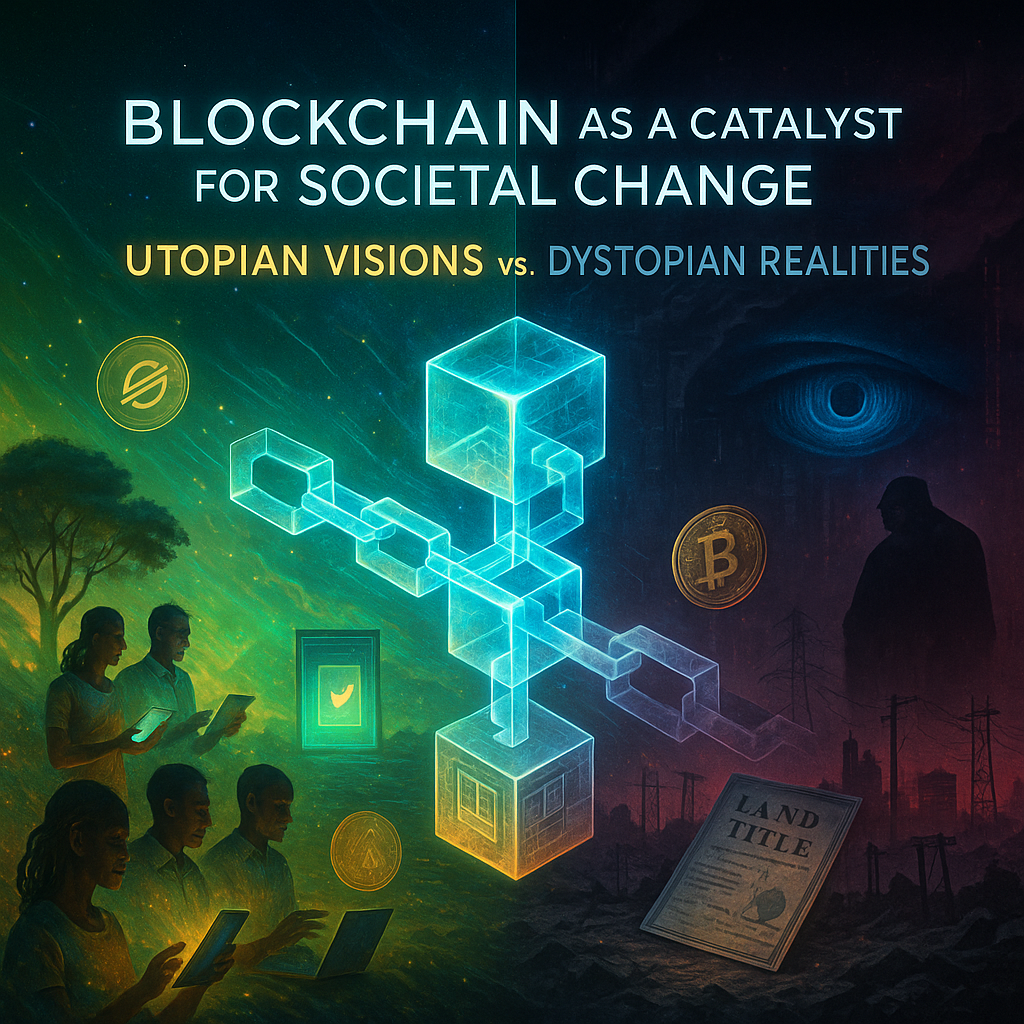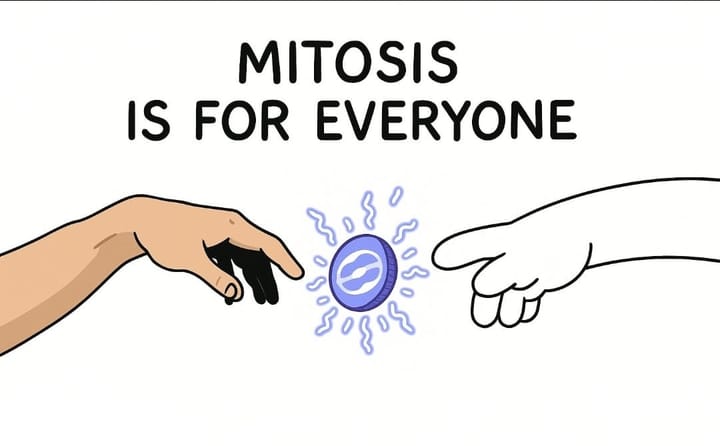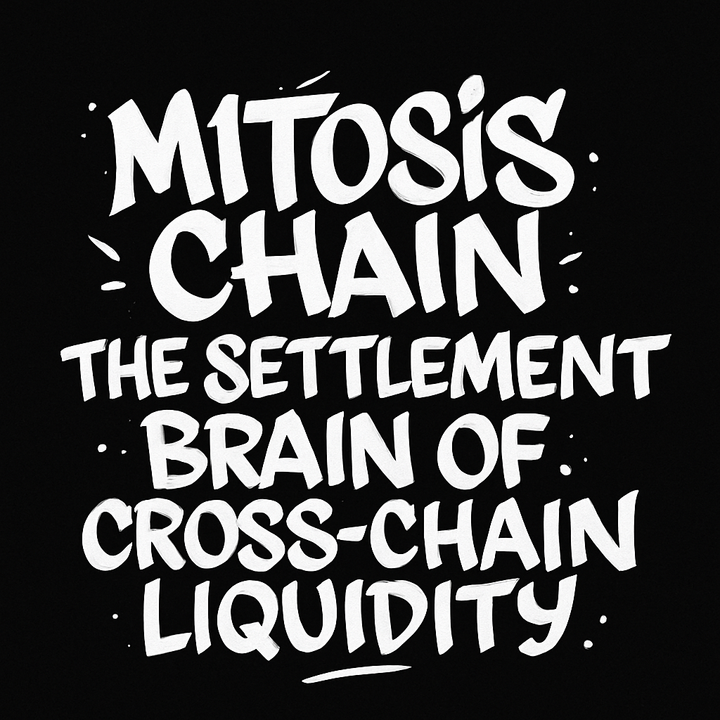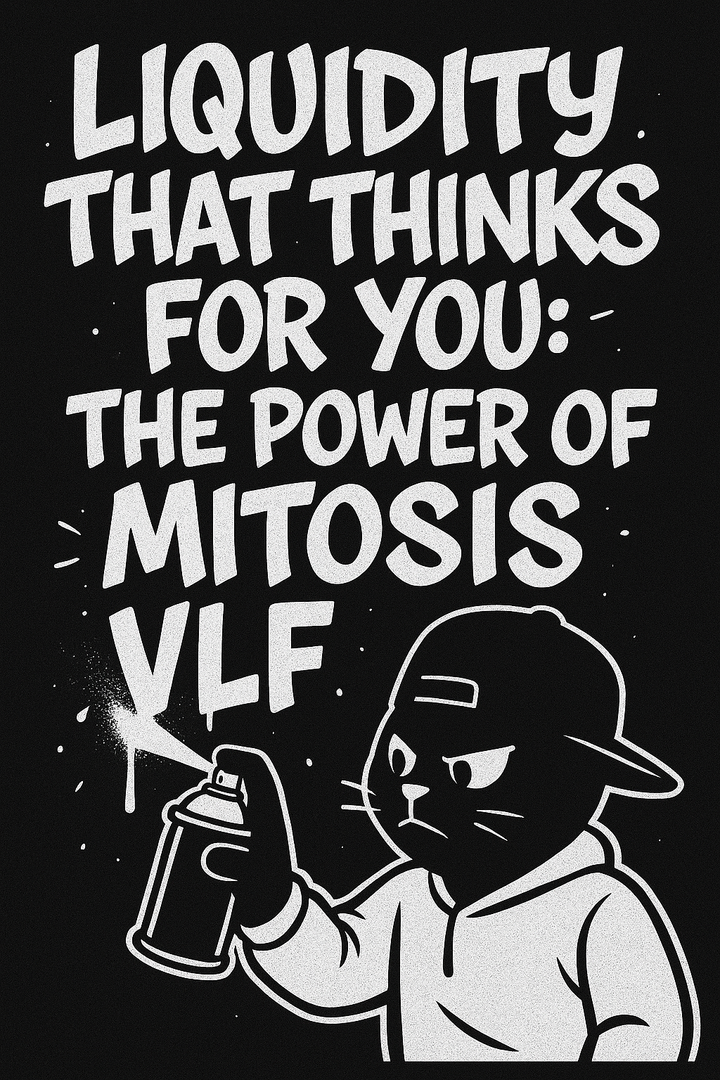Blockchain as a Catalyst for Societal Change: Utopian Visions vs. Dystopian Realities

Abstract
Blockchain is often hailed as a transformative technology, poised to reshape economic, social, and political systems. Built on the principles of decentralization, immutability, and transparency, it fuels hopes for financial inclusion, traceable supply chains, secure digital voting, and self-sovereign identities. Yet these same features can produce unintended consequences: heightened state surveillance, deeper economic inequality, and flawed models of digital governance. This article explores the dual nature of blockchain—its promise and its peril—and argues for a future guided by ethical governance, privacy-enhancing tools, and inclusive policies to ensure its societal impact remains equitable and empowering.
Introduction: Blockchain’s Double-Edged Sword
Blockchain has rapidly evolved from a niche innovation to a cornerstone of digital infrastructure, disrupting finance, supply chains, voting systems, and identity management (Investopedia). At its core, the technology offers a compelling vision: decentralized networks that promote transparency, security, and autonomy. But this vision comes with a paradox. The same mechanisms that can decentralize power and protect individual rights can also enable surveillance, concentrate wealth, and undermine democratic governance.
This article investigates both sides of the blockchain coin. On one hand, it powers dreams of open finance, transparent governance, and digital human rights. On the other, it risks entrenching new hierarchies and enabling authoritarian control under the guise of decentralization. By examining blockchain’s foundational principles, its real-world applications, and the societal tensions it creates, we ask a critical question: will blockchain lead us toward a decentralized utopia—or a new kind of centralized dystopia?
Defining Blockchain: Core Principles Revisited
Blockchain is a decentralized digital ledger that securely records transactions across a network of computers (Investopedia). Unlike traditional databases, it operates on three foundational principles: decentralization, immutability, and transparency (simplilearn).
- Decentralization: Control shifts from a single authority to a distributed network of nodes, each maintaining a copy of the ledger (Simplilearn). This enhances resilience against failures and censorship, fostering trust through shared information rather than intermediaries (AWS).
- Immutability: Once a transaction is verified and added as a block, it cannot be altered, with cryptographic hashing ensuring tamper-proof records (Simplilearn). Errors require new transactions, preserving a complete, auditable history (AWS).
- Transparency: In public blockchains, transaction data is visible to all participants, enabling verification and accountability. However, transparency varies, with private blockchains restricting access and privacy technologies like Zero-Knowledge Proofs (ZKPs) shielding sensitive data (Fujitsu).
These principles are not absolute; their implementation depends on a blockchain’s design and governance. Private blockchains, for instance, are less decentralized, while governance models range from on-chain voting to off-chain developer consensus (Sustainability Directory). The notion of “trustless” systems is misleading—trust shifts to cryptographic protocols, code security, and user practices, which can pose accessibility and accountability challenges.
Principle | Description | Key Characteristics |
|---|---|---|
Decentralization | Transfer of control and decision-making from a centralized entity to a distributed network. | Resilience, censorship resistance (potential), reduced single point of failure, distributed trust. |
Immutability | Inability to alter or delete recorded transactions once confirmed by the network. | Data integrity, tamper-proof records, auditability, historical permanence. |
Transparency | Visibility of transactions (to varying degrees depending on blockchain type) to network participants. | Openness, verifiability, accountability (potential), audit trails. |
Utopian Horizons: Blockchain as an Engine for Positive Societal Transformation
Blockchain’s principles inspire optimistic visions of addressing societal challenges, from financial inclusion to transparent supply chains, secure voting, and human rights advancements.
Democratizing Finance: Pathways to Financial Inclusion and Economic Empowerment
Globally, approximately 2 billion people remain unbanked, excluded by high costs, bureaucracy, and lack of identification. Blockchain offers a decentralized platform to reduce transaction costs, accelerate services, and enhance accessibility (IOSR Journal). Key applications include:
- Cross-Border Remittances: MoneyGram and Stellar’s blockchain platform enables real-time currency conversions, cutting costs and delays. BitPesa (now AZA Finance) revolutionizes African remittances by lowering fees.
- Mobile Banking: Coins.ph in the Philippines allows cryptocurrency transactions without bank accounts, serving the unbanked.
- Aid Distribution: The World Food Programme’s Building Blocks uses blockchain and biometrics to deliver aid to Syrian refugees transparently. Save the Children’s partnership with Fedi enables Bitcoin transfers for community empowerment.
- Digital Identity: Blockchain-based self-sovereign identities help the undocumented access services. Sierra Leone’s initiative with UNDP and Kiva provides formal IDs for credit access(CSIS).
- Central Bank Digital Currencies (CBDCs): India’s digital Rupee (e₹-R) pilot aims to enhance payment efficiency. Ghana’s blockchain-based property addressing system facilitates loans (ResearchGate).
These initiatives suggest blockchain can empower marginalized communities, but success hinges on overcoming “last mile” challenges like internet access, affordable devices, and digital literacy. Ethical design and inclusive governance are critical to avoid embedding biases (Sustainability Directory).
Illuminating Global Supply Chains: Enhancing Transparency, Ethics, and Efficiency
Complex global supply chains often lack visibility, complicating ethical sourcing, authenticity verification, and compliance. Blockchain’s immutable ledger tracks goods in real-time, enhancing traceability and efficiency (AIMultiple). Key examples include:
- Automotive Industry: Renault’s IBM partnership ensures component traceability, cutting non-compliance costs by 50%. Ford’s blockchain tracks cobalt for ethical battery production (AIMultiple).
- Food and Beverage: Nestle’s blockchain for NAN A2 infant formula in China restores consumer trust by verifying product origins via QR codes (AIMultiple). IBM Food Trust enhances farm-to-table traceability, reducing food safety risks (Venuez).
- Pharmaceuticals: A KPMG-Merck-Walmart-IBM project reduced drug tracking time significantly (Venuez).
These efforts improve consumer trust, reduce fraud, and support sustainability, but require robust governance to ensure equitable benefit.
Reimagining Democracy: The Potential of Blockchain-based Voting Systems
Traditional elections face challenges like fraud, tampering, and distrust. Blockchain’s security, transparency, and immutability could enhance electoral integrity (ITM Conferences). Notable pilots include:
- West Virginia (2018): Military and disabled voters used a mobile app to cast encrypted votes on a blockchain, with verifiable digital receipts, boosting turnout (Mobile Voting).
- Oman Proposal: A model combining blockchain, biometrics, and smart contracts aims for secure, transparent voting (F1000Research).
Blockchain voting could increase accessibility and trust, but faces significant hurdles, explored in the dystopian section.
Advancing Human Rights and Digital Dignity
Millions lack formal IDs, barring access to services. Blockchain offers self-sovereign identities and censorship-resistant payments:
- Digital Identity: ID2020 and Worldcoin explore blockchain IDs to empower the undocumented.
- Financial Freedom: Cryptocurrencies enable activists to receive funds without state interference.
- Land Rights: Kenya’s Land LayBy uses blockchain to secure land titles, reducing fraud.
These applications could restore dignity and support freedoms, with interconnected benefits across finance and supply chains (Innotech Today).
Application Area | Potential Benefits | Example Case Studies |
|---|---|---|
Financial Inclusion | Lower costs, faster transactions, access for unbanked, secure remittances, digital ID | BitPesa, Coins.ph, Stellar/MoneyGram, WFP Building Blocks, e₹-R |
Supply Chain Transparency | Traceability, ethical sourcing, anti-counterfeiting, compliance, efficiency | Renault, Ford, Nestle, IBM Food Trust |
Voting Systems | Enhanced security, transparency, auditability, potential for increased access | West Virginia Pilot, Oman Proposed Model |
Human Rights/Digital ID | Secure identity for stateless, censorship-resistant funding, secure land titles | ID2020 Alliance, Kenya Land LayBy, Save the Children/Fedi |
Dystopian Undercurrents: Navigating the Perils and Pitfalls
Blockchain’s potential for harm is as significant as its promise, with risks including surveillance, inequality, wealth concentration, and governance failures.
The Panopticon Reimagined: Surveillance States and Central Bank Digital Currencies (CBDCs)
CBDCs aim to modernize payments but raise surveillance concerns. Governments could track all transactions, eroding privacy (Emmer House). Programmable CBDCs might restrict spending or penalize behaviors, enabling social control (Emmer House). Critics, like Restore The Fourth, warn of authoritarian misuse, and proposed U.S. legislation like the Anti-CBDC Surveillance State Act reflects these fears. CBDCs could also disrupt private banking, centralizing financial ecosystems.
Deepening Divides: How Blockchain Could Worsen Inequality
The Digital Divide: Access, Literacy, and Cost Barriers
Blockchain relies on digital infrastructure, inaccessible to many due to limited internet, electricity, or devices. Its complexity demands digital literacy, and high costs (development, fees, hardware) exclude low-income communities. Energy-intensive blockchains like Bitcoin’s Proof-of-Work raise sustainability concerns, potentially marginalizing vulnerable populations further (Webisoft).
Wealth Concentration in the Cryptosphere
Cryptocurrency ownership is highly concentrated, with 2% of Bitcoin addresses holding 95% of the supply. Early adopters and institutions dominate, benefiting from price surges and economies of scale. High entry barriers and speculative markets exclude smaller investors, reinforcing wealth disparities (defi planet).
The Fragility of Digital Democracy: Critiques and Risks of Blockchain Voting
Blockchain voting faces significant critiques:
- Pre-Ledger Threats: Malware, compromised authentication, and DoS attacks threaten vote integrity before blockchain storage (Verified Voting).
- Scalability and Cost: Public blockchains may struggle with high transaction volumes, and implementation costs are prohibitive (ITM Conferences).
- Digital Literacy: Voters need technical skills, creating access barriers (ITM Conferences).
- Trust Shift: Blockchain shifts trust to infrastructure operators, risking collusion or attacks (Verified Voting).
- No Paper Trail: Lack of voter-verified paper audit trails undermines security, with experts like the National Academy of Sciences and MIT warning of new vulnerabilities (Verified Voting).
The Steem platform’s governance issues, where powerful users suppressed others, highlight risks of undemocratic outcomes (AISEL).
Risk Area | Description of Concern | Supporting Evidence/Examples |
|---|---|---|
Surveillance via CBDCs | Government tracking of all financial transactions, loss of privacy, potential for social control via programmable money. | “Anti-CBDC Surveillance State Act,” concerns from Blockchain Association, Restore The Fourth. |
Exacerbating Digital Divide | Barriers of infrastructure, cost, and digital literacy prevent equitable access, widening existing inequalities. | Limited internet connectivity, complexity of tech, cost of access. |
Wealth Concentration | Small number of early adopters/institutions hold vast majority of crypto wealth, limiting broader economic benefit. | ~2% of Bitcoin addresses hold 95% of BTC; “HODL” culture; institutional buying. |
Voting System Vulnerabilities | Malware on user devices, insecure authentication, scalability, lack of paper trails, potential for new attack vectors. | Critiques from National Academy of Sciences, Verified Voting, MIT researchers. |
Governance & Control Paradoxes | Decentralized systems can still lead to power imbalances, censorship by influential actors, and self-exploitation. | Steem case study: “whales” vs “minnows,” flagging wars, addiction to platform mechanics. |
Bridging the Chasm: Governance, Ethics, and the Path to Responsible Innovation
The Imperative of Robust Governance Models and Regulatory Frameworks
Blockchain’s decentralized nature challenges traditional regulation (Webisoft). Governance models include:
- On-Chain: Rules encoded in protocols, with token-holder voting (e.g., Tezos). Pros include transparency; cons include plutocracy risks.
- Off-Chain: External processes like developer consensus (e.g., Bitcoin). Pros include expertise; cons include perceived centralization.
- Hybrid: Combines both for balance but adds complexity.
Governance Model | Mechanism | Decision-Making Process | Pros | Cons | Examples |
|---|---|---|---|---|---|
On-Chain | Rules encoded directly into the blockchain protocol. | Proposals submitted, debated, voted on via blockchain transactions. | Direct stakeholder participation, transparency, automated enforcement | Voter apathy/turnout, expertise gap, risk of plutocracy | Tezos, Decred |
Off-Chain | Relies on processes outside the blockchain itself. | Forums, social media, working groups, informal consensus-building. | Leverages expertise, community dialogue, potentially faster. | Can be less transparent, perceived as centralized, inclusivity concerns. | Bitcoin, Ethereum |
Hybrid | Combines elements of both on-chain and off-chain governance. | E.g., Off-chain discussion for proposals, on-chain voting for ratification. | Balances decentralization with efficiency and flexibility. | Complexity in design and coordination. | Many newer projects |
The “code is law” fallacy ignores code vulnerabilities, requiring robust governance to address errors or disputes (Webisoft). Regulatory frameworks, like the U.S.’s proposed SEC-CFTC model, aim to balance innovation and consumer protection. The pacing problem—rapid innovation outstripping regulation—creates uncertainty, necessitating stakeholder collaboration.
Technological Safeguards: The Role of Privacy-Enhancing Technologies (PETs)
Public blockchains’ transparency raises privacy concerns. Zero-Knowledge Proofs (ZKPs) allow verification without revealing data, enabling private transactions, scalable ZK-Rollups, and secure identity verification. Challenges include computational intensity and design complexity, but ZKPs mitigate surveillance risks.
Addressing the Paradoxes: Lessons from Early Implementations
The Steem Blockchain Social Network illustrates governance paradoxes:
- Freedom vs. Captivity: Immutability enabled free speech but perpetuated harmful content and user addiction.
- Abundance vs. Scarcity: Rewards empowered creators but concentrated wealth among “whales.”
- Peace vs. War: Reputation systems encouraged civility but enabled harassment and “flagging wars.”
These dynamics underscore the need for socio-technical design, integrating ethical considerations to prevent perverse incentives (AISEL).
Conclusion: Charting a Course for Blockchain’s Societal Impact
Blockchain’s transformative potential is undeniable, offering solutions for financial inclusion, supply chain transparency, voting integrity, and human rights (Innotech Today). Yet, risks of surveillance, inequality, and governance failures loom large. Its trajectory depends on human choices—ethical design, inclusive governance, and robust regulation (World Economic Forum). Pilot projects, like West Virginia’s voting trial, and lessons from Steem highlight the need for iterative refinement (Mobile Voting). Addressing the digital divide through infrastructure and literacy investments is critical. Public education must counter misinformation, fostering informed discourse. By prioritizing equity, interoperability, and trust, stakeholders can ensure blockchain serves as a catalyst for an equitable future, not a tool for division.
CTA: Technologists, policymakers, and communities must collaborate to design inclusive blockchain systems, leveraging PETs and adaptive governance to maximize benefits and mitigate harms. Sustained research, pilot evaluations, and public engagement are essential to guide blockchain toward societal good.
References
- AIMultiple, https://research.aimultiple.com/blockchain-case-studies/
- AISEL, https://aisel.aisnet.org/cgi/viewcontent.cgi?article=1254&context=icis2018
- AWS, https://aws.amazon.com/what-is/blockchain/
- CSIS, https://www.csis.org/analysis/unlocking-financial-inclusion
- Defi Planet, https://defi-planet.com/2025/01/bitcoin-and-wealth-inequality-who-truly-benefits-from-perpetual-price-increases/
- Emmer House, https://emmer.house.gov/2025/3/congressman-emmer-announces-stakeholder-support-for-the-anti-cbdc-surveillance-state-act
- F1000Research, https://f1000research.com/articles/14-223
- Fujitsu, https://corporate-blog.global.fujitsu.com/fgb/2024-11-12/01/
- Innotech https://innotechtoday.com/heres-how-blockchain-is-redefining-social-impact-for-good/
- Investopedia, https://www.investopedia.com/terms/b/blockchain.asp
- ITM Conferences, https://www.itm-conferences.org/articles/itmconf/pdf/2025/07/itmconf_icsice2025_02004.pdf
- MIT DCI, https://www.dci.mit.edu/projects/going-from-bad-to-worse-from-internet-voting-to-blockchain-voting
- Mobile Voting, https://www.mobilevoting.org/updates/the-west-virginia-mobile-voting-case-study-providing-a-convenient-and-secure-voting-option-for-uniformed-service-members
- ResearchGate, https://www.researchgate.net/publication/390535054_Blockchain_for_Financial_Inclusion_Bridging_the_Gap_in_Cross_Border_Payments_for_Developing_Economies
- Simplilearn,https://www.simplilearn.com/tutorials/blockchain-tutorial/blockchain-technology
- Sustainability Directory, https://sustainability-directory.com/question/what-are-the-key-challenges-in-implementing-blockchain-for-bridging-the-digital-divide/
- Verified Voting, https://verifiedvoting.org/wp-content/uploads/2020/06/The-Myth-of-Secure-Blockchain-Voting-1002.pdf
- Venuez, https://www.venuez.dk/case-studies-successful-implementation-of-transparent-supply-chains/
- Webisoft, https://webisoft.com/articles/disadvantages-of-blockchain/
- World Economic Forum, https://www.weforum.org/stories/2025/01/cryptocurrency-regulations-era-experis-digital-finance/
Similar Articles
The Ethics of Immutability: "Code is Law" and Its Consequences
🔒 Smart Contracts: Redefining Trust Through Code
From Anarchy to Autonomy: Reimagining Society Through Blockchain and Web3
Navigating GDPR and Public Blockchain: Challenges and Solutions
Privacy vs. Transparency: Balancing Blockchain’s Open Ledgers with Personal Rights
Tokenization of Real World Assets (RWA): How Blockchain Is Opening the Doors to Traditional Finance
The Tokenization of Everything: A New Paradigm for Value, Ownership, and Access



Comments ()